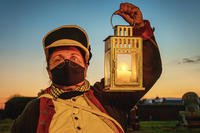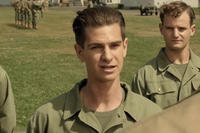Benedict Arnold began the Revolutionary War as a dedicated patriot and able battlefield commander. Without Arnold, it could be argued, the fledgling United States may not have survived. All he really wanted was recognition for his contributions.
Had he not become the most famous turncoat in U.S. history, his remains might have been interred in a grand or historically meaningful tomb, visited by thousands every year. Arnold's betrayal, however, overshadows any contribution to American independence, and his tomb is visited by only a dozen or so every day.
The only problem is those visitors are around five years old and have no idea who he was, if they know he's there at all. Today, his London crypt has been repurposed as a kindergarten classroom.
Before his betrayal, Arnold led American patriot forces in much of the fighting that took place in Canada and New England between 1775 and 1780. There were two pivotal battles that changed the course of the war, the outcomes for which Arnold felt he deserved credit.
In October 1776, the U.S. Navy fought one of its first-ever battles under the command of an Army general: Brig. Gen. Benedict Arnold. The Americans fought the British near Valcour Bay on Lake Champlain. They didn't win the battle, but their performance under Arnold's command effectively prevented a British invasion from Canada that year.
Arnold was lambasted by his fellow officers because he lost many of his ships in the Great Lakes to the British fleet defending Lake Champlain. It cost him a promotion to major general, and snub that nearly caused him to resign. George Washington convinced him to stay in the Continental Army. He would finally reach the rank in 1777.
When the British invasion from Canada did come, Arnold was a field commander as the Continental Army met it at Saratoga, New York. Arnold was wounded twice in the defense of Saratoga, but the American victory led to French intervention and, eventually, American independence -- but the credit for Saratoga went to Gen. Horatio Gates.

It was, of course, in 1780 that Arnold's plot to abandon West Point to the British was exposed. Arnold, nearly crippled by his wounds and incensed that he was continuously denied the credit for his contributions, began to have doubts about his cause. He purposely weakened the fort’s defenses and ensured it would be low on supplies if a British attack came.
It never came. Although he finally settled on the price of 20,000 pounds to hand the fort over, the plot came to light before it could be put into action. Arnold escaped to the British army, was given an annual income and the rank of brigadier general. Although he led a few raids on commercial targets, the military glory that eluded him in the Continental Army still eluded him as a redcoat.
When the Americans won their war of independence, Arnold relocated to Canada and later London, where the specter of his betrayal never left him. He was never fully trusted, struggled in his business ventures and was even burned in effigy in front of his family.
Arnold died in 1801 and was interred at St. Mary's Church, Battersea, in London, England. The basement crypt of the old church is where the Sunday school classes are held and, on weekdays, is rented out to a private kindergarten.
Somewhere along the walls, amid the books, crayon drawings and fish tanks is a tombstone that reads "In this crypt lies the bodies of Benedict Arnold, 1741-1801, Sometime general in the army of George Washington and devoted wife Margaret Shippen and their beloved daughter Sophia Matilda Phipps. The two nations whom he served in turn in the years of their enmity have united in enduring friendship."
The relief was donated in 2004 by an anonymous donor who believed Arnold should be recognized for his contributions toward American independence.
Today, the only American memorial is the “boot monument” in Saratoga National Historical Park. Benedict Arnold isn't mentioned by name, but the monument a tribute to Arnold and his wounded leg and reads:
"In memory of the "most brilliant soldier" of the Continental Army who was desperately wounded on this spot the sally port of Burgoynes Great Western Redoubt. 7th October, 1777 winning for his countrymen the decisive battle of the American Revolution and for himself the rank of Major General."

-- Blake Stilwell can be reached at blake.stilwell@military.com. He can also be found on Twitter @blakestilwell or on Facebook.
Want to Learn More About Military Life?
Whether you're thinking of joining the military, looking for post-military careers or keeping up with military life and benefits, Military.com has you covered. Subscribe to Military.com to have military news, updates and resources delivered directly to your inbox.















